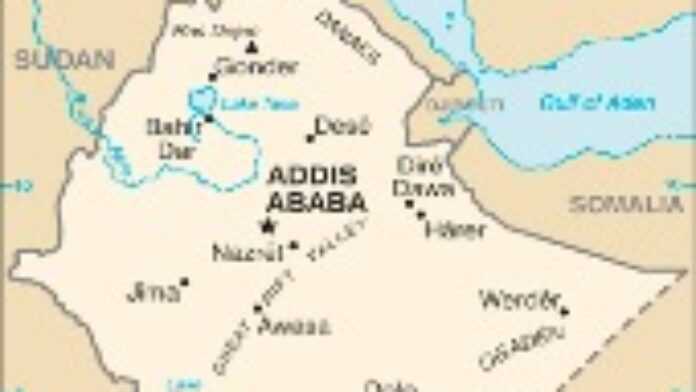
After months of government in-fighting concerning results of new population census conducted in 2006 and released in December 2008, the Ethiopian parliament ordered a Census Commission to re-examine an earlier projection data, which had bloated the current Amhara Regional State population statistics by over two million. Statistics from the new population census conducted and approved by the Central Statistics Agency has considerably impacted the allocation of budget. This comes after the Ethiopian government decided to use the new statistics as a benchmark for the next fiscal year’s budget allocation. According to the chairman of the Parliamentary Budget and Finance Standing Committee, the new budget could be readjusted while expressing his doubts on the finality of the census statistics. His views have been challenged.
The Central Statistics Agency, charged with annual population growth projections, put the Amhara regional population at 19.7 million in its projection for the year 2006. However, a population census conducted in 2006 indicated a 2.4 million reduction in the projected figures. According to the Census Commission, headed by Deputy Prime Minister Adisu Legese, also chairman of Amhara Nationalities Democratic Movement (ANDM), their five month long inquiry has given its stamp of approval to the new Amhara Regional State population statistics. It remains at 17 million.
“Consultants hired from Harvard University including experts from the (Census) secretariat made an in-depth evaluation of the result but couldn’t find any fault with data collection methods or analysis”, Samiya Zekaria head of the secretariat, also Director General of the Central Statistics Agency (CSA) said. To avoid any possible political influences that could affect an objective census result, the secretariat made sure local residents of Amhara were involved in the project, which helped with an “accurate” data collection “covering all kebeles of the region,” said Samiya.
In December 2008, a political battle among parliamentarians — that set members of the same parties against each other while bringing together some opposition MPs and members of the ruling coalition (EPRDF) — began when Samiya Zekaria, head of the census secretariat and also Director General of the Central Statistics Agency (CSA), in a meeting with the parliamentarians admitted that the disparity between the projection and real census figures was way beyond measure. “Mostly there is a variation between projection and actual census, however, it should only amount to 1.5 percent, according to international standards,” she said. The ensuing house battle was marked by an unexpected reaction, when MPs from the ruling party spoke out against their leaders.
“Non-Ethiopians aware of the negative impact of population growth may wonder why the downward revision caused such an outcry, but the MPs had good reason: it is a battle to gain not only more political power but also more money,” said an observer who did not wish to be named. Indeed, according to the country’s electoral law, more populated areas mean more MPs, which also translates into more budget subsidies from the Federal Government. The more populated a region is, the higher its budget allocation from the central government. “That is why MPs from Amhara complained thunderously, however, they couldn’t change it, which means the region’s budget subsidy for the coming fiscal year has been cut,” the observer continued.
Last week, the House of Federation approved a budget formula in which the Federal Government allocated its budget to the regions for the next fiscal year. According to Ayalew Gobeze, chairman of the House’s Budget and Finance Standing Committee, and also the president of Amhara State, the budget allocation was made using the latest census results and that it stands to be modified should the Central Statistics Agency’s (CSA) investigation into the Amhara population lead to a readjustment of the new statistics before parliament announces next year’s budget. Samiya, however, insists that no readjustment will be needed. “Indeed, it is possible some faults will be found in the projection, but it couldn’t affect the actual census results (which have already been) approved by the commission,” she told Capital.
The census secretariat has launched investigations into the 2006 projection data. Rates of mortality, fertility and migration that led to the projection are under microscopic scrutiny.

